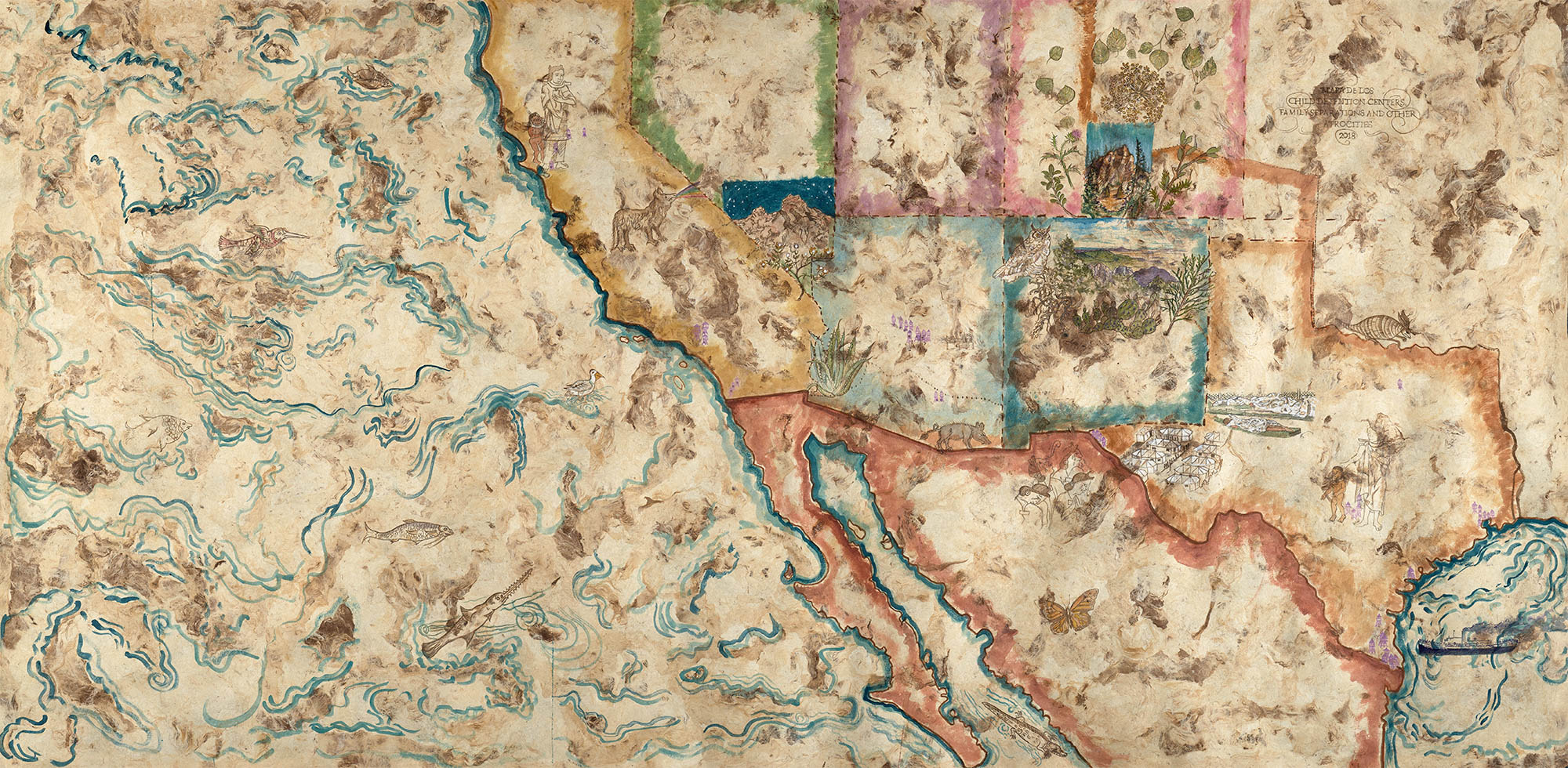
Book 13: After the Conquest – Codex Rodriguez Mondragon
Book 13: After the Conquest – Codex Rodriguez Mondragon
Sandy Rodriguez
Sandy Rodriguez
As human rights abuses in the United States become more extreme, particularly with Latinx communities on both sides of the US-Mexico Border, Sandy Rodriguez performs interdisciplinary research on recuperating Indigenous knowledge systems like plant-use and pigment recipes. Book 13: After the Conquest – Codex Rodriguez Mondragon will expand this codex of research through an immersive multiroom installation, presenting field study, archival research, project development, and the production of new works to provide a space of healing and visual possibilities for current and historical traumas.
Installation, Painting & Printmaking, Visual Arts
2021
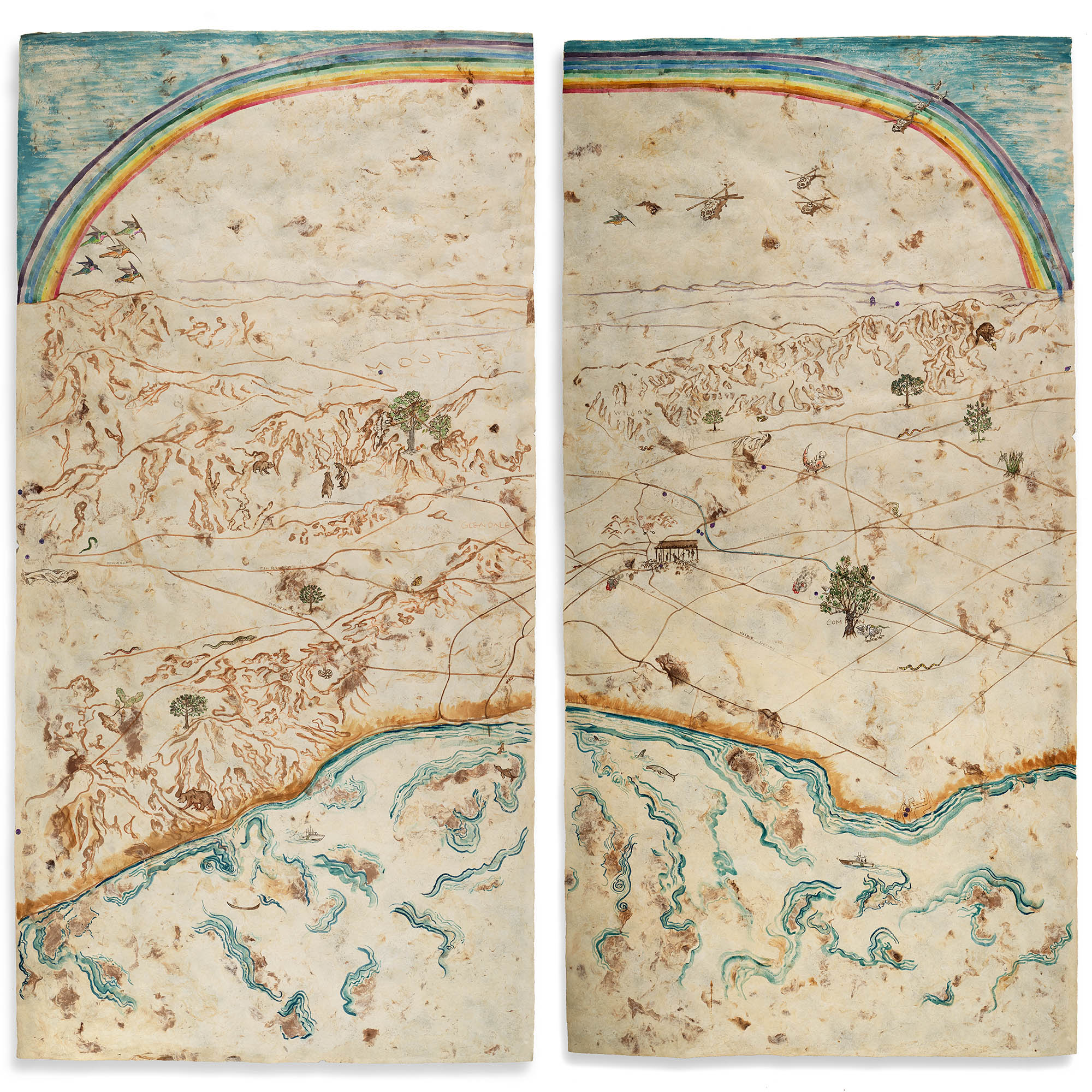
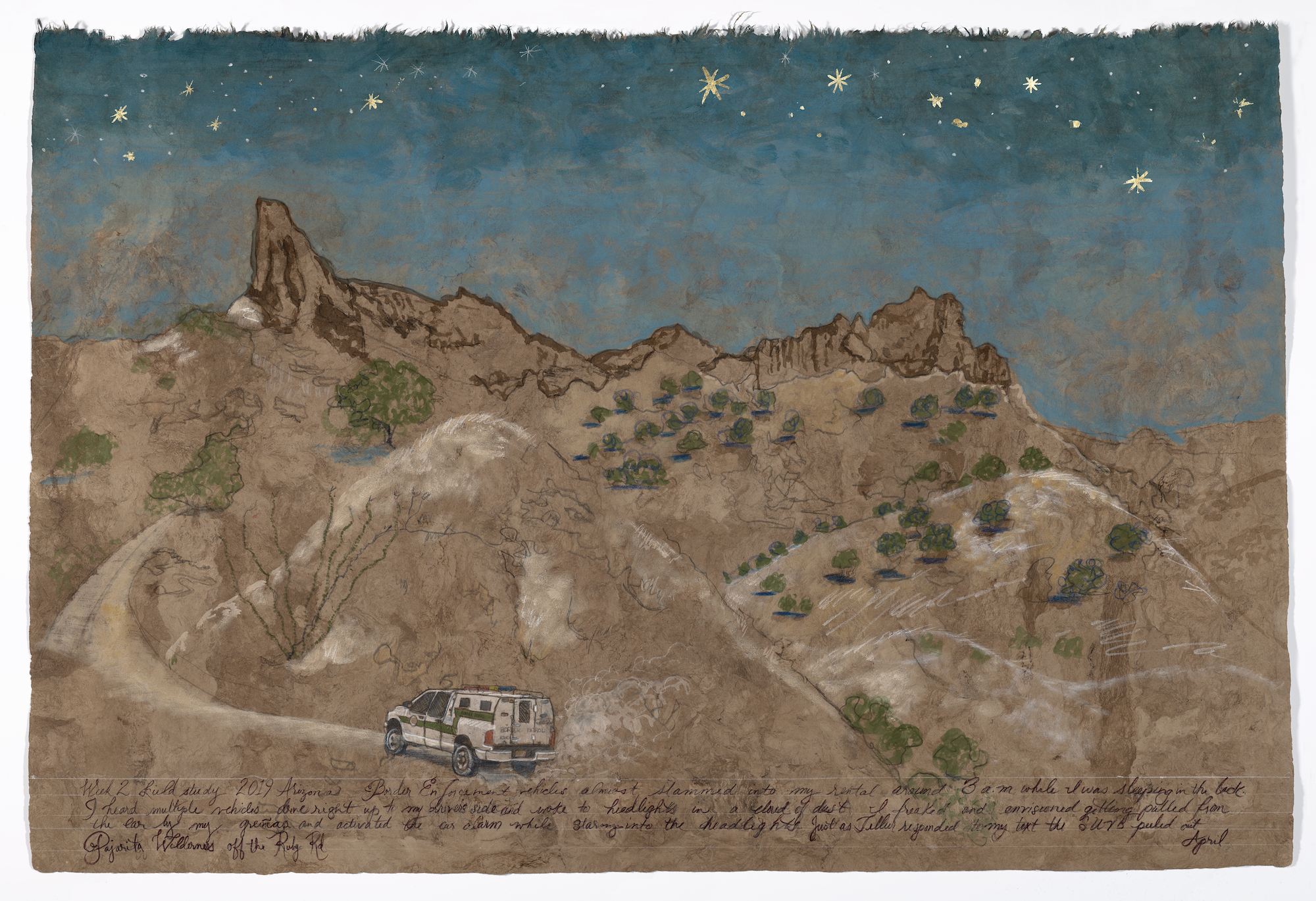
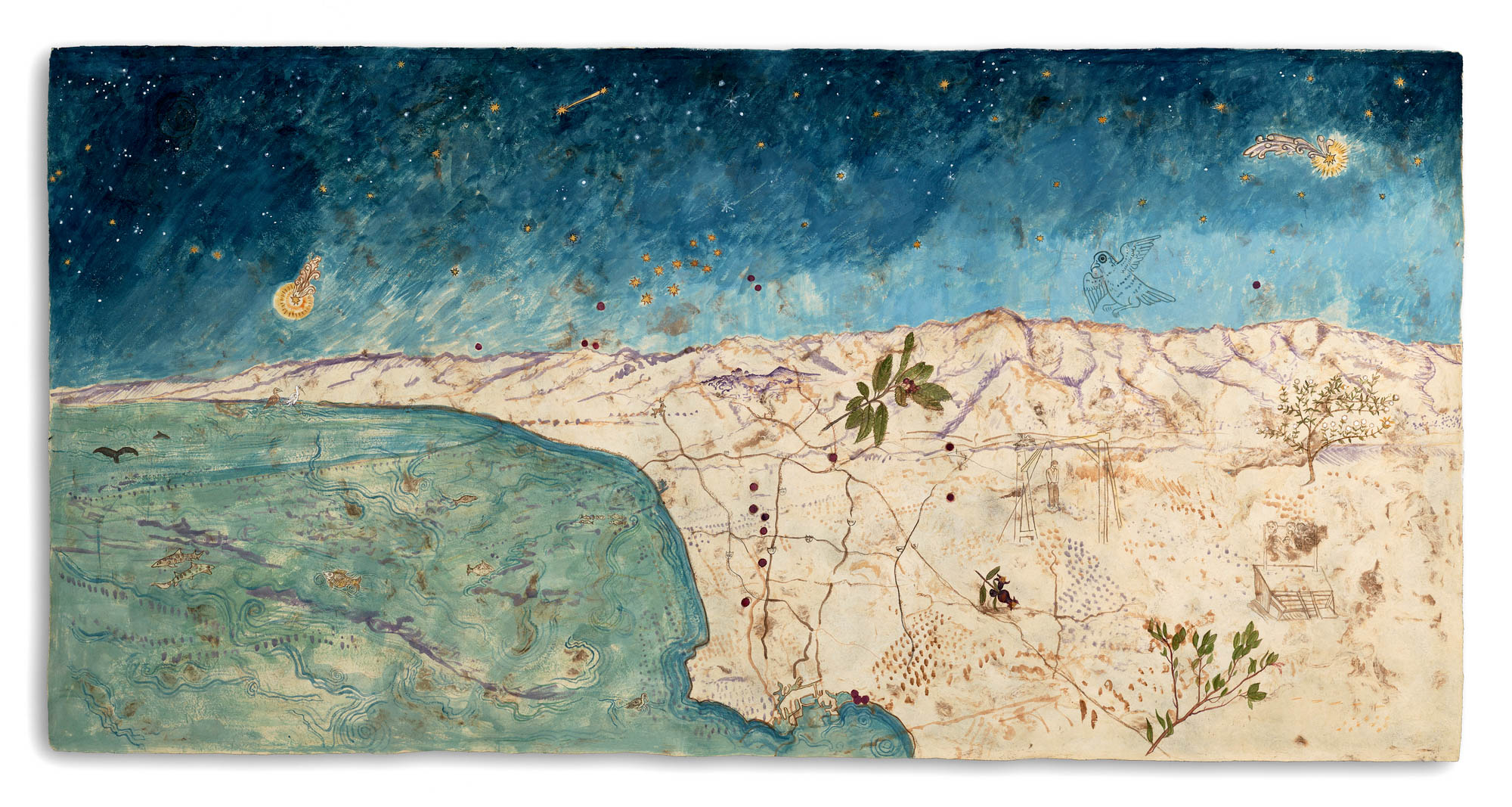

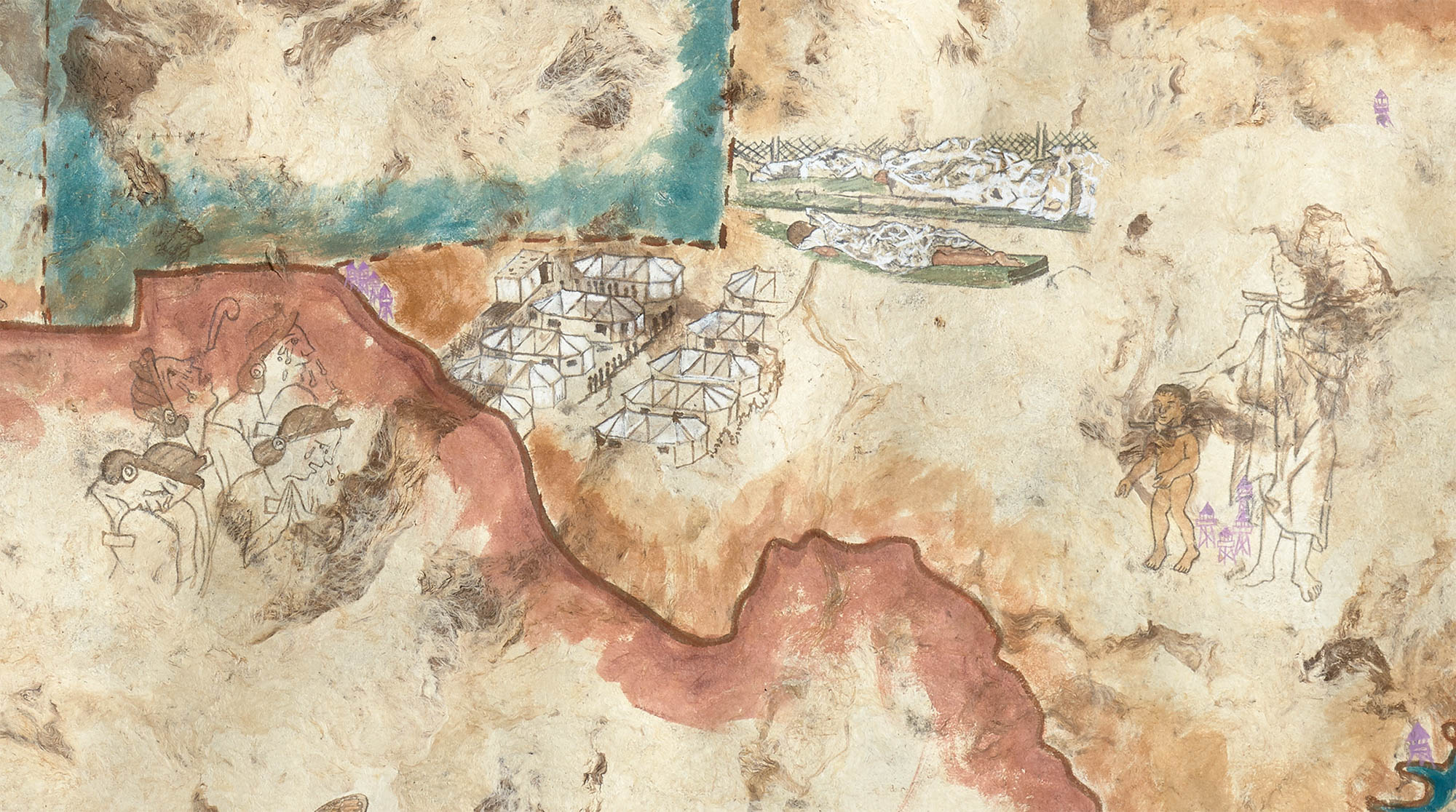
About Sandy Rodriguez
Los Angeles, CA
 Sandy Rodriguez is a visual artist and researcher who grew up in San Diego and Los Angeles in California, and Tijuana, Baja California, Mexico. Her works map intersections of history, social memory, and contemporary politics. Strongly influenced by both the 16th-century colonial Florentine Codex and present-day incidents along the US-Mexico border and Western US, her series Codex Rodriguez-Mondragón maps the ongoing cycles of violence on communities of color by blending historical and recent events. The maps are painted with locally sourced natural materials such as minerals, plants, and insects employed in history of image making of the Americas. The images are painted on sacred (formerly outlawed) Amate paper made from fig and mulberry tree bark. In addition to her major solo exhibitions In Isolation (Amon Carter Museum of American Art, Texas, 2021) and Sandy Rodriguez: Codex Rodriguez-Mondragón (Riverside Art Museum, California, 2018), she has also presented her work at the group exhibitions Traitor, Survivor, Icon: The Legacy of La Malinche (Denver Art Museum, Colorado, 2022) and Estamos Bien: La Trienal 20/21 (El Museo del Barrio, New York, 2021).
Sandy Rodriguez is a visual artist and researcher who grew up in San Diego and Los Angeles in California, and Tijuana, Baja California, Mexico. Her works map intersections of history, social memory, and contemporary politics. Strongly influenced by both the 16th-century colonial Florentine Codex and present-day incidents along the US-Mexico border and Western US, her series Codex Rodriguez-Mondragón maps the ongoing cycles of violence on communities of color by blending historical and recent events. The maps are painted with locally sourced natural materials such as minerals, plants, and insects employed in history of image making of the Americas. The images are painted on sacred (formerly outlawed) Amate paper made from fig and mulberry tree bark. In addition to her major solo exhibitions In Isolation (Amon Carter Museum of American Art, Texas, 2021) and Sandy Rodriguez: Codex Rodriguez-Mondragón (Riverside Art Museum, California, 2018), she has also presented her work at the group exhibitions Traitor, Survivor, Icon: The Legacy of La Malinche (Denver Art Museum, Colorado, 2022) and Estamos Bien: La Trienal 20/21 (El Museo del Barrio, New York, 2021).
Sandy Rodriguez is a visual artist and researcher who grew up in San Diego and Los Angeles in California, and Tijuana, Baja California, Mexico. Her works map intersections of history, social memory, and contemporary politics. Strongly influenced by both the 16th-century colonial Florentine Codex and present-day incidents along the US-Mexico border and Western US, her series Codex Rodriguez-Mondragón maps the ongoing cycles of violence on communities of color by blending historical and recent events. The maps are painted with locally sourced natural materials such as minerals, plants, and insects employed in history of image making of the Americas. The images are painted on sacred (formerly outlawed) Amate paper made from fig and mulberry tree bark. In addition to her major solo exhibitions In Isolation (Amon Carter Museum of American Art, Texas, 2021) and Sandy Rodriguez: Codex Rodriguez-Mondragón (Riverside Art Museum, California, 2018), she has also presented her work at the group exhibitions Traitor, Survivor, Icon: The Legacy of La Malinche (Denver Art Museum, Colorado, 2022) and Estamos Bien: La Trienal 20/21 (El Museo del Barrio, New York, 2021).
